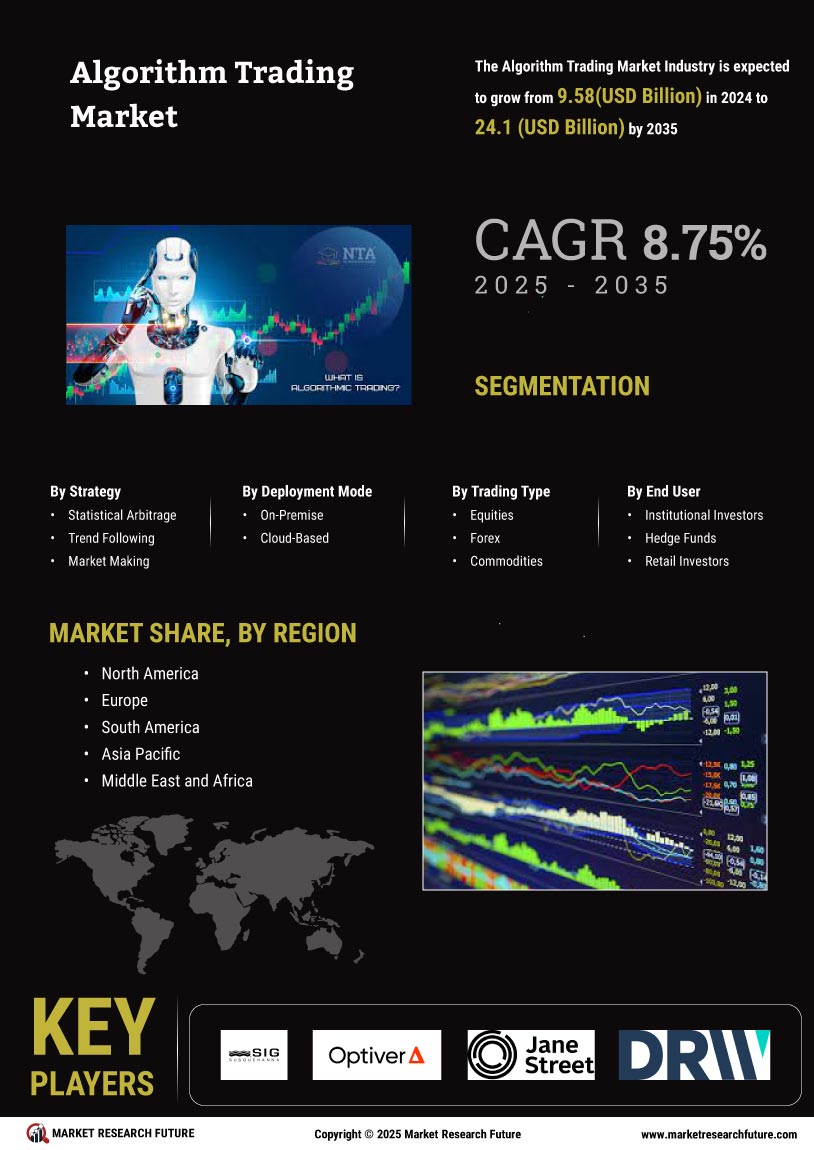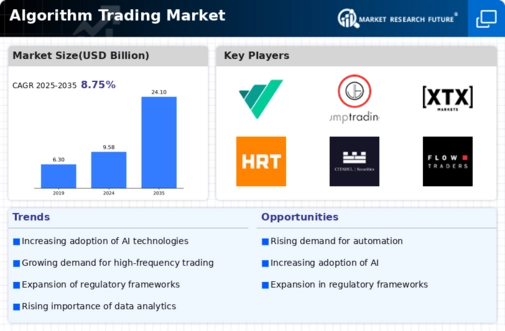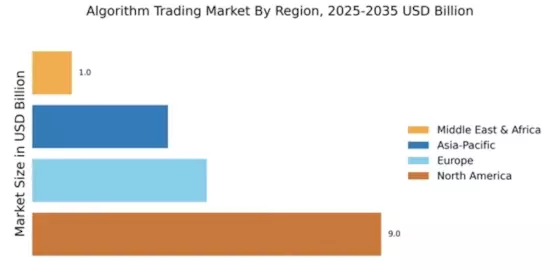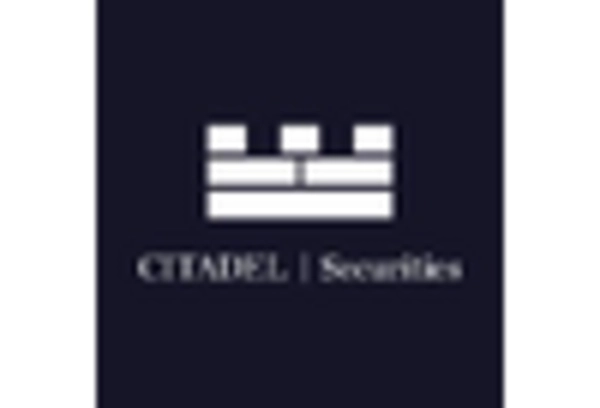North America : Market Leader in Algorithm Trading
North America continues to lead the Algorithm Trading Market, holding a significant market share of 9.0 in 2025. The region's growth is driven by technological advancements, increased trading volumes, and a robust regulatory framework that supports innovation. The demand for algorithmic trading solutions is further fueled by the rising need for efficiency and speed in financial transactions, making it a critical component of modern trading strategies.
The competitive landscape in North America is characterized by the presence of major players such as Citadel Securities, Jane Street, and Two Sigma Investments. These firms leverage cutting-edge technology and data analytics to enhance trading performance. The U.S. remains the dominant country in this sector, with a well-established infrastructure and a favorable business environment that attracts both domestic and international investments.
Europe : Emerging Hub for Algorithm Trading
Europe is emerging as a significant player in the Algorithm Trading Market, with a market size of 4.5 in 2025. The region benefits from a diverse financial landscape and regulatory support that encourages innovation in trading technologies. The demand for algorithmic trading is driven by the increasing complexity of financial markets and the need for efficient trading solutions, which are essential for maintaining competitiveness in a globalized economy.
Leading countries in Europe include the Netherlands and the UK, where firms like IMC Trading and Optiver are at the forefront of algorithmic trading. The competitive environment is marked by a mix of established players and innovative startups, fostering a dynamic market. Regulatory bodies are actively working to ensure a balanced approach to innovation and risk management, which is crucial for sustaining growth in this sector.
Asia-Pacific : Rapid Growth in Trading Technologies
The Asia-Pacific region is witnessing rapid growth in the Algorithm Trading Market, with a market size of 3.5 in 2025. This growth is driven by increasing market participation, technological advancements, and a shift towards electronic trading platforms. The demand for algorithmic trading solutions is further supported by the region's expanding financial markets and the rising adoption of fintech innovations, which enhance trading efficiency and accuracy.
Countries like Japan and Australia are leading the charge in algorithmic trading, with a growing number of firms entering the market. The competitive landscape is becoming increasingly vibrant, with both local and international players vying for market share. The presence of key players and a supportive regulatory environment are essential for fostering innovation and ensuring the region's competitiveness in the global trading landscape.
Middle East and Africa : Emerging Market Potential
The Middle East and Africa (MEA) region is gradually emerging in the Algorithm Trading Market, with a market size of 1.02 in 2025. The growth is driven by increasing financial market sophistication and a rising interest in algorithmic trading solutions among local investors. Regulatory frameworks are evolving to support this growth, providing a conducive environment for technological adoption and innovation in trading practices.
Countries like South Africa and the UAE are at the forefront of this development, with a growing number of firms exploring algorithmic trading strategies. The competitive landscape is still developing, but the presence of key players and increasing investments in technology are paving the way for future growth. As the region continues to modernize its financial markets, opportunities for algorithmic trading are expected to expand significantly.

















